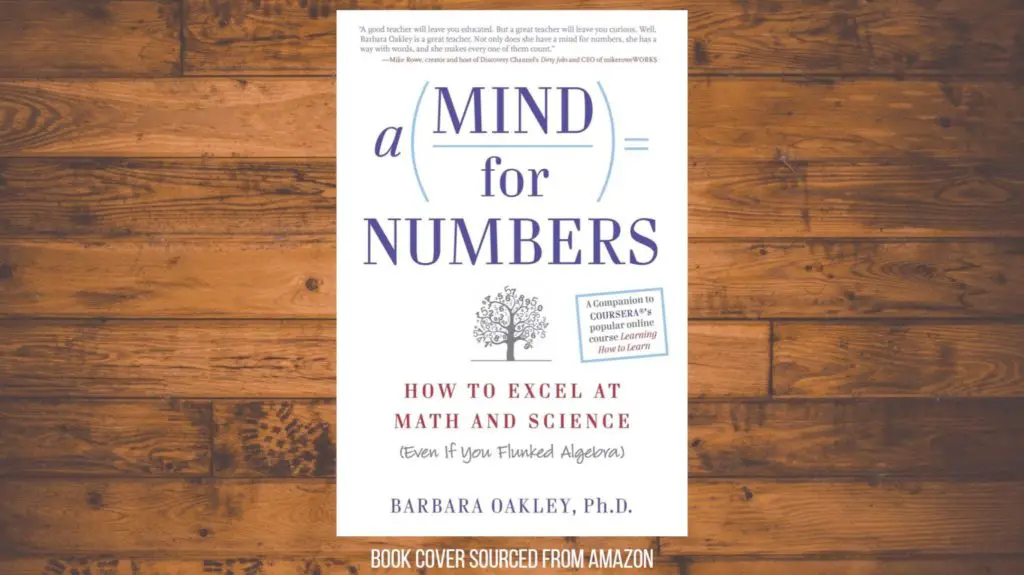This post may contain affiliate links, which means I’ll receive a commission if you purchase through my links, at no extra cost to you. Please read full disclosure for more information.
If I asked you how you preferred to learn, what would come to mind?
Is it reading for hours on end?
Is it consuming information visually or in an auditory way?
Are you the type of person who likes to write on whiteboards and map things out?
Learning can be done in a number of ways and everyone has their preferences. However, some of these strategies will lead to individuals consuming information and forgetting shortly after. Other strategies will help information stick in an individual’s long-term memory.
Long-term memory is where we want the material to end up when we go about learning something new. When the material is retained, we are able to call upon that information when we need it. Without retention of information, our learning efforts are all for nothing.
In this post, we’ll discuss active learning and techniques you can use for effective learning and studying.
WHAT IS ACTIVE LEARNING?
Active learning is a method of learning where an individual cognitively engages and interacts with the material they are trying to absorb.
Rather than passively consuming information through basic reading or listening, active learning entails discussion, analysis, synthesis, problem-solving, reflection, and practice. Active learners will process what they are learning and draw connections to things they have previously learned to tie things to the big picture
Active learning is characterized by:
- Being engaged in the material
- Questioning and reflecting on topics
- Associating and connecting things they are learning with things they already know
- Creating study guides, notecards, and visuals to interact with material and remember it
- Quizzing self through tests and examples
- Writing things out in your own words rather than copying
- Reviewing material frequently through spaced repetition
- Teaching others what you have learned
Why active learning works
This style of learning is known to help students perform better and retain more information. The additional mental work required helps with understanding information and the long-term retention of that information.
Active learning engages the brain and helps fire off the synaptic wiring in your brain to help form new connections and strengthen current connections.
To avoid stepping out of bounds of what I know (business person speaking on neuroscience), I’ll reference books such as Spark and The Owner’s Manual for the Brain that I have recently read. The two books mention how learning involves the activation of neurons and synaptic activity.
Active learning is conducive to activating these processes within the brain. When you learn, connections are formed with your neurons and synapses.
With deeper thought and repetition, these connections are strengthened. Without the repetition or activation of these areas of the brain, the connections weaken, similar to building and losing muscle. If you don’t use it, you’ll lose it.
WHAT IS PASSIVE LEARNING?

Passive learning is the way most of us are accustomed to learning new things. It involves individuals receiving instruction from someone or something (like a book). From the perspective of the individual who is learning, the focus is on consuming as much information as possible for as long as possible.
Passive learning is characterized by:
- Reading and rereading material
- Receiving instruction in person or through video
- Listening to podcasts and audiobooks
- Mindlessly writing notes
- Highlighting text in books to come back to
The problem with this is that we consume information but don’t engage, synthesize, or reflect on what we just learned. Because of this, we never fully grasp the material and that leads to us having to re-read or re-watch things over and over with hopes of the information eventually sticking.
When we read a book on investing, we’ll read it through and mindlessly highlight information that seems important to come back to.
We’ll take an online course and feel like we’re getting somewhere since our eyes are glued to the screen.
Even taking notes can be passive depending on how you are going about it. While taking notes can be considered active learning, it falls under passive when all you are doing is transferring words from a book, video, podcast, etc to a piece of paper without engaging with the material you are studying.
When you are learning through passive methods, there is no way to test your knowledge of the material.
Reading things through and memorizing certain things does not equate to understanding. If you are questioned on something outside of the specifics you memorized, you won’t have enough of a developed understanding to formulate your own response.
I frequently ran into this in college when I would memorize how certain examples were calculated so I could remember that for the test. However, when I would get to the test, the question would be asked in a different way. That wasn’t the way that I memorized and I didn’t have the concrete understanding of the problem to calculate it a different way.
HOW ACTIVE LEARNING CAN IMPACT YOUR LIFE AND CAREER

If you’re a returning visitor the Bizness Professionals blog, I can assume with confidence that you are someone who is focused on professional and personal development.
Development will require constant learning:
- Obtaining a college degree
- Learning how to perform your responsibilities at work
- Pursuing certifications such as the CPA and CFA
- Learning leisurely for the sake of gaining knowledge and improving yourself
Wouldn’t you want to optimize the way you learn so you can study smarter instead of study harder?
When you choose to implement active learning strategies, you are setting your future self up for success. Through active learning, you’ll learn and retain more now and this will benefit you in the future when you need to recall information.
When I got into my career, I found myself going back and studying things I had already “learned” in my undergraduate classes.
I put that in parentheses because I didn’t really learn the material at all in college the first time. I was introduced to the material and jammed it all into my head just to pass a test.
Once the test was done, my mind probably discarded everything. It was just information in, information out. There was minor cognitive engagement for a majority of the topics I learned. The university I attended isn’t at fault for this. This was my own underestimation of learning methods.
I wish I had chosen to learn actively back then. I probably would have scored better on my tests and I wouldn’t have to have gone back to relearn everything once I got into my career.
When you are young with demanding goals, wasting time is infuriating. You can probably relate. Going back to re-read things twice or re-watch a lecture you have already seen is a waste of your time.
It’s better to focus on actively learning things the first time around. As a result, you won’t need to review things as often or as deeply as you did before. A review will just be to brush up on things, not learn the entire topic again from scratch.
ACTIVE LEARNING STRATEGIES FOR CONTENT TYPE

Below are some strategies you can use for active learning based on the type of content you are consuming.
Reading text
- Annotate text as you write to aid in understanding
- After every few pages or at the end of the chapter, summarize what you have read
- Write out descriptions/summaries of what diagrams, charts, and other visuals are communicating
- After reading a chapter, tell someone or talk to yourself explaining what you just read
Watching lecture or tutorial (in-person or online)
- Draw photos and diagrams for the material being lectured on and summarize with text underneath
- Pause the video frequently to ask yourself what it is that you have just learned
- Paraphrase the words you are hearing into your own words
- Use colored pens and highlighters when taking notes with each color representing something in particular
Listening to podcasts or audio
- When you hear something that catches your attention, write the item down into a notes app. Compile all the notes together after finishing the podcast or audiobook for review
- Pause frequently to reflect on if you are understanding what’s going on
- After hearing a piece of the lecture, pause, and try to repeat the lecture out loud in your own words if you can
- If you are sedentary at a desk while listening to something, have pen and paper next to you to take notes with
Studying lecture notes
- Identify main points in your own words
- Create unique charts, diagram, and other visuals to aid in remembering
- Re-write your notes, but in a different form. (e.g. if you took basic bullet-point notes, re-write your notes using the Cornell Method.
- Practice all examples from the lecture notes. Read the directions for the example, do the problem on your own, then check the work to see if you did it correctly
Practicing problems and exercises
- Re-work and practice all problems and exercises you currently have done already without any help
- Create your own examples once you feel comfortable enough
- Walk someone else through the examples and learn through teaching (this is basically what I am doing when I write tutorials on this blog).
- Work through problems and examples with another person. Seeing how someone else goes about solving the same problem can open up your perspective.
Reading PowerPoint slides
- Print slides out and write freely on them
- Write possible test questions that could be asked next to main points on the slides
- Create concept maps with main content
- Create flashcards based on slides. Then shuffle cards and test yourself to see if you can remember content even out of order
ACTIVE LEARNING STRATEGIES FOR LEARNING STYLE

The three styles of learning people can full under include:
- Auditory: Those who learn best by listening
- Visual: Those who learn best by seeing
- Kinethetic: Those who learn best by being hands-on with things
Below are active learning strategies for all 3 styles.
Auditory
- Consume information such as podcasts, audiobooks or even just the audio of an online lecture
- Summarize what you are learning out loud while recording your voice. Then play that recording back to yourself.
- Walk around the park with your flashcards. Say the questions and answers out loud as if you were teaching someone
- Work in a pair or with a group and discuss the topic of study and quiz each other
- Teach what you have learned to peers, family and friends
- Use mnemonics and songs to help with memory
Visual
- Draw pictures, diagrams, mind maps etc for what you are learning
- Uses physical objects when walking through examples to understand how something works.
- Use assortment of pens and highlighters to make your notes stand out
- Re-write notes in different methods, with different headings as well. Seeing alternate headings may help with learning and memory
- Use post-it notes while you read through a book or material. Stick the post-it note on the pages
Kinesthetic
- Use a variety of colors and fonts when writing out notes
- Use physical objects to talk through examples to be more hands on. For example, a cup is net income and place mats are the 3 financial statements. You use them to show how net income flows through the financial statements
- Sketch and doodle on study material
- Create physical notecards or notecards on Quizlet
- Redo past exams or recreate the exam environment to practice in. For example, study in the classroom you will take your exam in or practice your research presentation in the room you will be presenting in
SUMMARY
Learning comes down to acquiring information and retaining that information.
Most people focus on the first part of that: acquiring. They read and watch lectures for hours and hours, taking notes without really engaging with what they are learning.
They have a packet of notes they review and re-read, hoping the information sticks in their head.
With active learning, you can give yourself the best chances to grasp and retain what you are learning.



